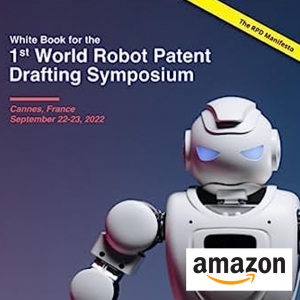
Patent Attorney Bao Tran Discusses Critical Challenges and Solutions Thereto for In-House IP Counsels in 2025
PatentPC logo
Are there "bulletproof" solutions for challenges in patent drafting, prosecution, and enforcement in 2024? Patent Attorney Tran explores possible solutions.
PALO ALTO, CA, UNITED STATES, February 4, 2025 /EINPresswire.com/ -- As the intellectual property landscape continues to evolve rapidly, Patent Attorney Tran, a seasoned patent attorney based in Silicon Valley, has identified several key challenges facing in-house IP counsel in 2024. Drawing on his extensive experience, including creating patent portfolios for innovative products like Invisalign and Shutterfly, Tran offers valuable insights into the most pressing issues for corporate IP teams.
Increased workload and resource constraints are putting significant pressure on in-house legal departments. Many teams are facing growing IP portfolios and more complex matters without corresponding increases in headcount or budgets. This is forcing in-house counsel to find creative ways to accomplish more with limited resources.
Portfolio management has become increasingly challenging as legal departments struggle to keep up with tracking deadlines, gathering filing data, and maintaining up-to-date portfolios. The sheer volume of IP assets is overwhelming many in-house teams.
Operational efficiency remains a top priority, with legal departments seeking to reduce manual tasks and administrative work that takes up too much attorney time. There is a growing need to streamline workflows and improve productivity.
Technology adoption is critical, but also presents hurdles. About 45% of legal departments are investing in new tech, but implementing and onboarding new systems can be time-consuming and disruptive. Balancing the benefits of new tools with the challenges of implementation is an ongoing struggle.
Cybersecurity has emerged as a major concern, with 43% of in-house lawyers reporting being kept awake by cybersecurity issues. Protecting sensitive IP data from breaches and attacks has become a critical priority.
Navigating the implications of AI and emerging technologies is an increasing focus. In-house counsel must grapple with the legal and ethical questions raised by AI in patent prosecution, while also exploring how to leverage AI tools to enhance their own workflows.
Global collaboration and protection strategies have grown more complex. Managing international patent portfolios and ensuring consistent IP protection across jurisdictions is challenging for multinational companies.
Talent acquisition and retention remain difficult, with many legal departments facing challenges in recruiting qualified candidates. Misalignment between salary expectations and budgets is a common issue.
Looking ahead to 2025, Attorney Tran forecasts that many of these challenges will persist, but expects to see progress in several areas. "I anticipate we'll see more widespread adoption of AI-powered tools to boost efficiency, along with increased investment in cybersecurity measures," said Tran. "In-house teams will likely develop more sophisticated portfolio management strategies and global collaboration frameworks. While resource constraints may continue, I expect many legal departments will find innovative ways to do more with less through technology and process optimization."
The use of AI tools in patent prosecution presents both opportunities and challenges for patent attorneys and in-house counsel. These tools have the potential to significantly streamline and enhance various aspects of the patent process, but also raise important considerations that must be carefully navigated.
One of the primary benefits of AI in patent prosecution is increased efficiency. AI-powered tools can assist in prior art searches, helping attorneys identify relevant references more quickly and comprehensively than traditional manual methods. This can lead to stronger patent applications and potentially faster prosecution timelines. AI can also aid in drafting patent applications, suggesting claim language and helping to ensure consistent terminology throughout the specification.
However, the use of AI in patent drafting raises questions about inventorship and ownership. As AI systems become more sophisticated, there may be debates about whether an AI system could be considered an inventor or co-inventor on a patent application. Current patent laws generally require human inventors, so the use of AI in the invention process may require careful documentation to establish human inventorship.
Quality control and accuracy are critical considerations when using AI tools in patent prosecution. While AI can process vast amounts of information quickly, it may not always capture nuanced legal arguments or understand the full context of an invention. Patent attorneys must carefully review and validate AI-generated content to ensure it meets legal standards and accurately represents the invention.
Ethical considerations also come into play when using AI in patent prosecution. Attorneys have a duty to disclose all material information to the patent office, and it's important to consider whether the use of AI tools creates any new obligations in this regard. There may also be questions about whether the use of certain AI tools could be considered unauthorized practice of law if they perform tasks traditionally done by licensed attorneys.
Data security and confidentiality are paramount when using AI tools that may process sensitive invention information. Law firms and in-house legal departments must ensure that any AI systems they use have robust security measures in place to protect client data and maintain attorney-client privilege.
Looking ahead, the integration of AI into patent prosecution is likely to continue and accelerate. Patent offices around the world are also exploring the use of AI in examination processes, which could further change the landscape of patent prosecution. As these tools evolve, it will be crucial for patent professionals to stay informed about best practices, legal developments, and ethical guidelines related to AI use in patent law.
About PatentPC
Mary Kimani
PatentPC
+1 800-234-3032
email us here
Visit us on social media:
Facebook
X
LinkedIn
YouTube
Other
Use Technology to Cut IP costs
Distribution channels: Business & Economy, Law, Politics, Science, Technology
Legal Disclaimer:
EIN Presswire provides this news content "as is" without warranty of any kind. We do not accept any responsibility or liability for the accuracy, content, images, videos, licenses, completeness, legality, or reliability of the information contained in this article. If you have any complaints or copyright issues related to this article, kindly contact the author above.
Submit your press release



